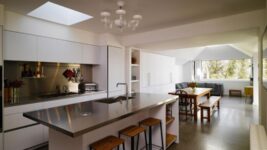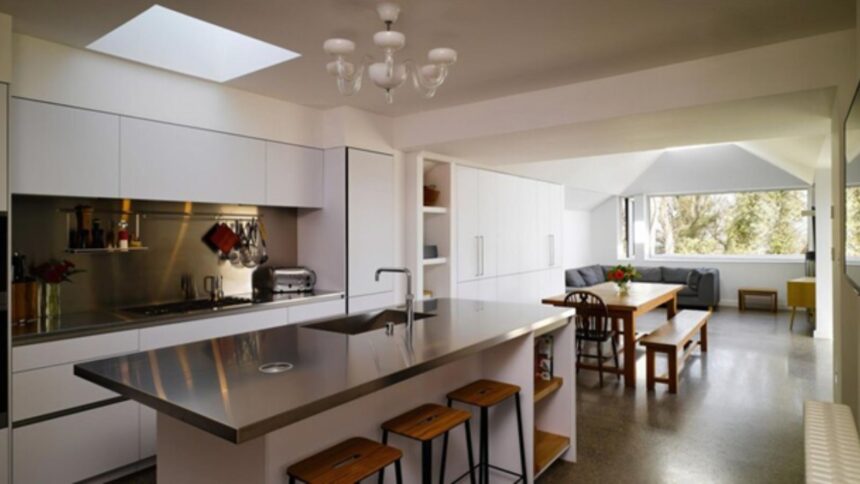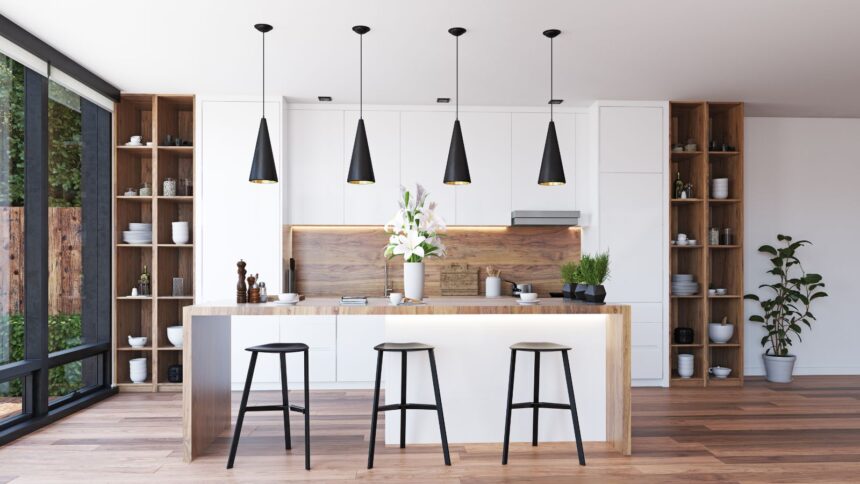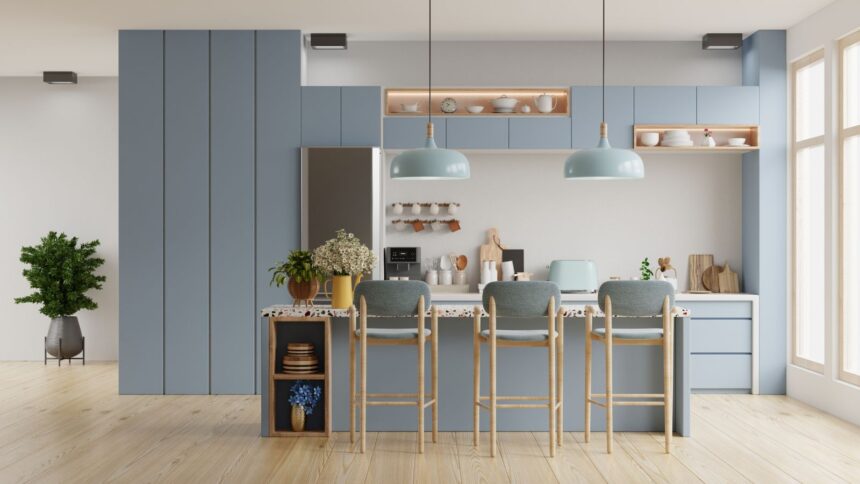
Open-Concept Kitchen Design: How To Balance Style And Function

Open-concept kitchens are a popular choice for modern homes, blending aesthetics with practicality. They create a sense of space, encourage social interaction, and offer seamless flow between cooking, dining, and living areas. But designing an open-concept kitchen that’s both beautiful and functional requires careful planning. For homeowners considering a full kitchen renovation, working with experienced professionals ensures that every design element—from layout to lighting—is executed with precision and style.
Here are 10 ways to make your space work without sacrificing style.
1. Invest In High-Quality Appliances
In an open-concept kitchen, your appliances are always on display. That’s why it’s essential to choose high-quality models that not only look sleek but also perform reliably. Wolf appliances are a perfect example. With their stainless steel finishes and professional-grade performance, Wolf ovens, ranges, and cooktops add both style and substance to your kitchen.
But even the best appliances need maintenance. If your Wolf range isn’t heating evenly or your Wolf oven door won’t close properly, book Travis County Appliance Repair to address the issue before it becomes a bigger problem. Keeping your appliances in top shape ensures your kitchen remains both functional and visually appealing.
2. Optimize Your Layout For Flow And Function
An open-concept kitchen should feel spacious and inviting, but it also needs to support efficient cooking. Arrange your layout to minimize unnecessary movement. The classic work triangle—positioning the stove, sink, and refrigerator within easy reach—is still a reliable design principle.
However, in an open space, consider how the kitchen interacts with surrounding areas. For example, placing the cooktop on an island allows you to engage with guests while cooking, enhancing both functionality and social interaction.

3. Balance Openness With Practical Storage Solutions
One challenge of open-concept kitchens is maintaining a clean and clutter-free look. Since everything is visible, it’s important to maximize storage without compromising design.
Use a combination of closed cabinets, open shelving, and built-in pantry spaces to keep essentials organized. Consider integrating appliance garages or sliding panels to conceal small appliances when not in use. This way, your kitchen stays tidy and visually appealing, even when you’re preparing meals.
4. Create Distinct Zones Without Walls
Open-concept kitchens often flow into adjacent dining and living areas, which can sometimes make spaces feel undefined. To maintain visual clarity, create distinct zones using design elements like lighting, flooring, and furniture placement.
Pendant lights over the kitchen island can visually separate the cooking area from the rest of the space, while area rugs can define the dining or seating area. Using different textures and materials—such as contrasting countertops or backsplashes—can further emphasize each zone without the need for walls.
5. Choose Materials That Enhance Both Aesthetics And Durability
Since an open-concept kitchen is part of your home’s main living space, every design choice should balance beauty with practicality. Choose materials that are both stylish and easy to maintain. For countertops, quartz and granite offer durability and timeless appeal.
For cabinetry, wood finishes bring warmth, while sleek lacquered surfaces provide a contemporary look. Flooring should be both attractive and resilient—hardwood, luxury vinyl, or large-format tiles are excellent choices that can seamlessly connect the kitchen to surrounding areas.
6. Use Lighting To Set The Mood And Improve Functionality
Lighting plays a crucial role in open-concept kitchens, both for practical tasks and creating ambiance. Layer different types of lighting to enhance both functionality and aesthetics. Install bright task lighting under cabinets and over work surfaces for cooking and food prep. Use pendant lights over the island to add style and define the space.
Recessed ceiling lights provide general illumination, while dimmable options allow you to adjust the atmosphere depending on the occasion—bright and energetic for cooking, soft and warm for entertaining.

7. Maintain Consistent Design Throughout The Space
In an open-concept layout, visual cohesion is key. Since the kitchen is connected to the dining and living areas, its design should complement the overall aesthetic of your home. Choose a color palette that flows naturally from one space to another.
Neutral tones like white, gray, and beige create a clean and modern look, while rich wood finishes add warmth and depth. Use similar materials and finishes across the kitchen and adjacent areas to create a seamless, harmonious feel.
8. Keep Ventilation In Mind
With an open-concept kitchen, cooking smells can easily spread throughout the entire living space. To maintain a fresh and comfortable environment, invest in a high-quality ventilation system.
Cooktops and ranges, for instance, can be paired with powerful ventilation hoods designed to capture smoke, grease, and odors effectively. Ensure your ventilation system is regularly maintained to keep it performing at its best—especially if you frequently cook with strong flavors or high heat.
9. Don’t Overlook Acoustics
Open spaces can sometimes amplify noise, making it harder to create a relaxed atmosphere. To reduce noise levels, incorporate soft materials that absorb sound. Area rugs, upholstered furniture, and fabric curtains can help minimize echoes.
Additionally, choosing quieter appliances—like dishwashers with low decibel ratings—ensures that everyday kitchen activities don’t disrupt conversations in adjacent living areas.
10. Personalize Your Space With Thoughtful Details
Finally, add personal touches that reflect your style and make the space feel inviting. Display favorite cookbooks on open shelves, add artwork that complements your kitchen’s color palette, and incorporate greenery with potted plants or fresh herbs. By balancing design and functionality, your open-concept kitchen can be both a beautiful focal point and a practical, welcoming space for cooking, dining, and gathering with loved ones.




